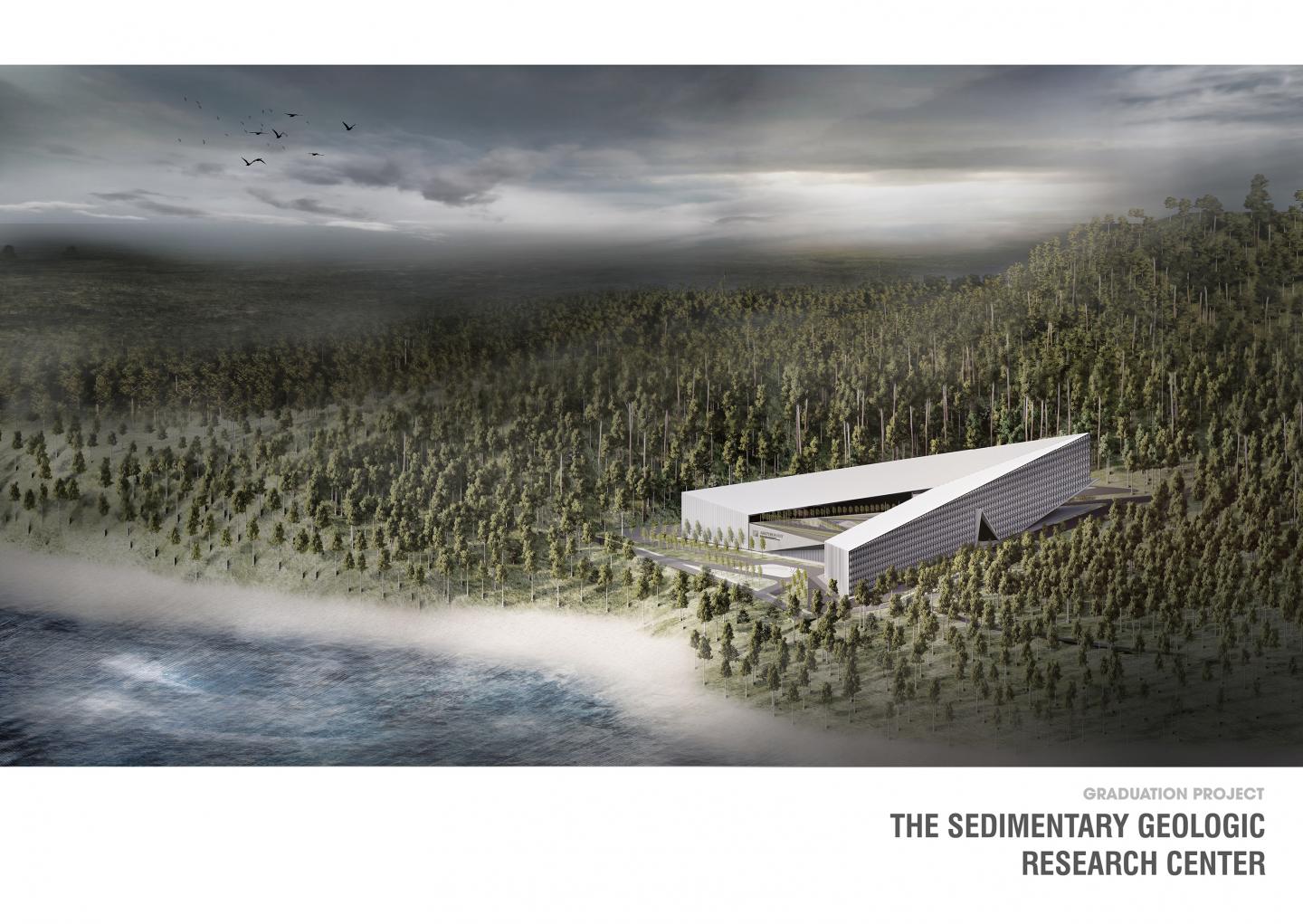Geological heritage, tangible cultural heritage, sedimentary igneous rocks, sedimentary conglomerate, coral reefs were seriously destroyed by blasting. The effect of climate change and freshwater shortage accentuate threat.
So, this project aims to raise awareness of preserving sedimentary geology, promote extensive research on geology and design according to sustainable architecture. Solutions of sustainable architecture will minimize the negative enviromental impact of this project by enhancing efficiency and moderation in the use of materials, energy. As site of plan is located in the low latitude, the annual rainfall total was recored in Ly Son district is high. Slope of roof not only productively collectes rainwater, but also maximise the efficiency of solar panels. After all this considerations and my further insvestigation, I came to the idea of the sedimentary geology research center which protects geoheritage value (it’s history started c.2 billion years ago), conserves natural ecosystems, helps Ly Son- Sa Huynh Geopark to be a member of the UNESCO Global Geoparks Network soon.
The project was based on 5 main strategies:
RESEARCH GEOLOGY The main purposes of the geological laboratories are research, preservation and help geoheritage values to be recognized and developed.
RAISE AWARENESS OF GEOHERITAGE VALUES
Sedimentary geology is very important to boost local economic and has a direct effect on the quality of life.
PRESERVING CULTURAL HERITAGE
A part of the gallery in this project will exhibit historical and cultural relics, mainly of the ancient Sa Huynh, Champa and Vietnamese cultures.
ECO - FRIENDLY ENVIROMENT
Both structure and slope of roof, adaptive facade system, sustainable materials could recycle rainwater, transform waste into energy, minimize damage and destruction of the natural habitat.
PROMOTE LOCAL SPECIALITY (GARLIC)
Connecting both natural biodiversity around and indigenous agriculture by landscape in this project.
The program is divided into three categories:
1. The laboratories are zones of intensive research about geology and secure safety, sustainability, high security. Except for researchers, unauthorized person could not access. This is a reason why all research laboratories are located in the higher levels and public spaces are two floors below.
2. Public spaces such as the library, the exhibition, the discovery center mini, the conference to serve passengers and raise awareness of geoheritage values and cultural heritage.
3. Landscape linked this project to natural biodiversity by native flora.The pilot studies of the producing indigenous agriculture were also located in landscape to improve highly garlic production and boost the local economy.
In order to resolve the problems of freshwater shortage, the impact of climate change, preserving sedimentary geology, the sedimentary geology research center uses solutions such as: a roof slope, adaptive facade, using sustainable materials and local materials to reduce the radiation of heat, store of rainwater for reuse before it reaches the aquifer, minimise the project’s impact on the enviroment, head for the resilience of ecosystem.
2021
2021
Site area: 5.28 ha
Percentage of building density: 34%
Floor: 5
Instructor: Phạm Phú Cường
Student: Phạm Thị Thủy Tiên
Favorited 2 times













